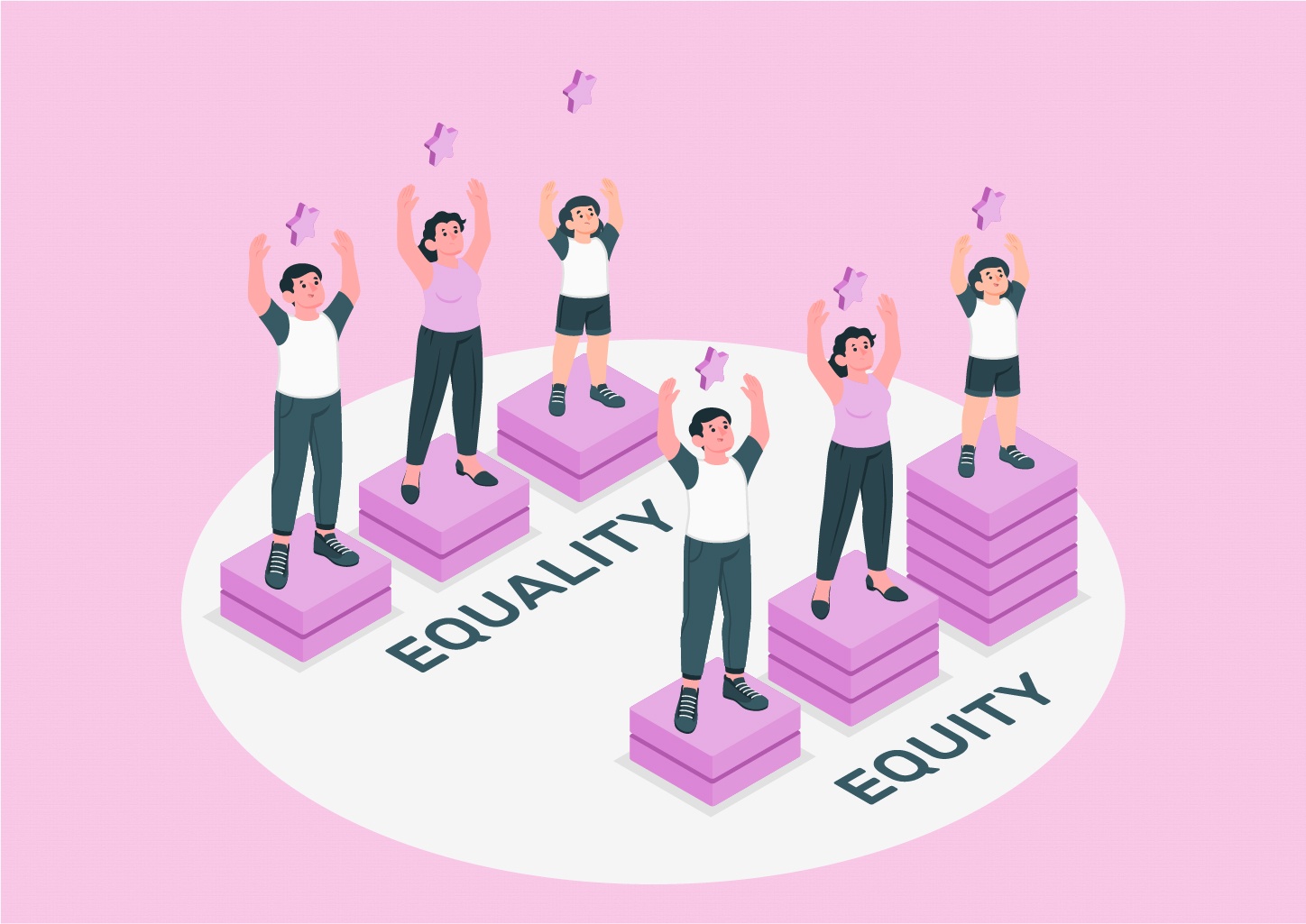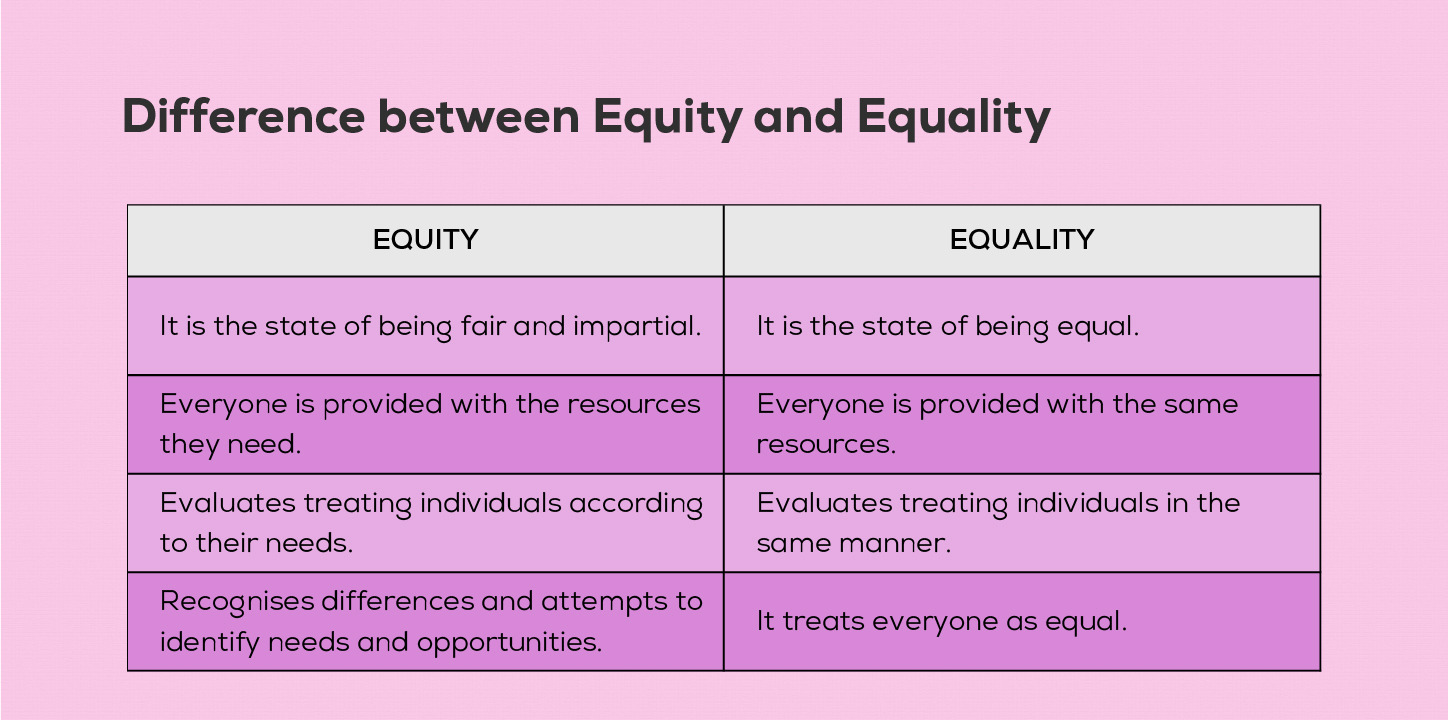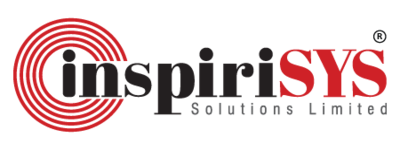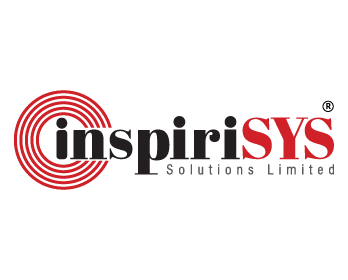“Equality is leaving the door open for anyone who has the means to approach it; equity is ensuring there is a pathway to that door for those who need it.”
— Caroline Belden
As workplaces continue to evolve, equity is becoming a key driver for organizational growth by ensuring that every individual receives the support and access needed to succeed. Creating an equitable workplace begins with recognizing the diverse experiences and barriers that individuals face. When organizations invest in understanding and addressing these differences, they create more inclusive environments—fuelling innovation, engagement, and measurable business success.
Before we explore workplace equity, it’s important to understand that every person’s journey is shaped by unique experiences. This short video highlights why moving beyond labels is essential to creating environments where everyone feels seen, valued, and supported.
What is Equity?
In the workplace, equity means more than providing equal access—it involves tailoring opportunities and support to meet the specific needs of individuals. It addresses the uneven distribution of resources and advancement by recognizing that employees bring diverse backgrounds, experiences, and challenges. By acknowledging these differences, organizations can create a more inclusive environment where every employee has a fair chance to succeed.
To better understand how equity operates in practice, it's important to first distinguish it from equality.
Difference between Equity and Equality
At first glance, equity and equality may appear similar, but in practice they serve very different purposes. Understanding this distinction is essential for building a workplace that’s not just inclusive in policy, but impactful in action.

Equality refers to providing the same resources or opportunities to everyone, regardless of their individual circumstances. Equity, on the other hand, acknowledges that people begin from different starting points—and works to distribute resources in a way that enables equal outcomes for all.
Here is the table that depicts the difference between equity and equality:

Learn how embracing equity can transform your workplace. Watch this quick video to see the real difference between equity and equality:
Practical Ways to Apply Equity at Work
Equity becomes meaningful when translated into daily practices, policies, and interactions. The following approaches reflect how organizations can embed equity into their culture and operations.
1. Skill-based Hiring
This approach prioritizes a candidate’s skills and competencies over their formal credentials or background. By focusing on real-world abilities rather than educational qualifications, organizations can tap into a broader, more diverse talent pool—accelerating hiring while promoting inclusivity.
2. Equitable Access for Employees
Equity also means ensuring access—not just to roles, but to the tools needed to perform them. That includes adaptive workspaces, accessible meeting formats, and support for sensory needs. Whether it’s providing closed captioning in presentations or quiet rooms for better focus, accessibility enables everyone to contribute effectively.
3. Empower Your Employees
Offering resources alone will not be enough. Empowering employees starts with making those resources visible, clearly communicated, and easily accessible. When employees are aware of the support systems available to them and understand how to use them, they are better equipped to grow, contribute, and thrive in their roles.
4. Build Awareness of Equity
Start by creating a shared understanding of what equity means in your organization. Host awareness sessions, encourage open conversations, and support mentorship programs for new hires. Leaders play a vital role in reinforcing equity through daily actions and cultural alignment.
5. Spotlight Wage Equality
Close scrutiny of compensation structures is essential to eliminate inequities. Although some strides have been made, gaps tied to gender and race remain. Promote pay transparency and encourage open dialogue to build trust and fairness.
6. Communicate Targets and Share Progress
Clear goals backed by consistent updates keep equity efforts on track. Use modern communication platforms like Microsoft Teams or Slack to share milestones, maintain engagement, and strengthen collective accountability.
7. Highlight Equitable Representation
Diversity in leadership signals true opportunity for all. Actively support underrepresented employees through development programs and equitable promotion pathways, ensuring leadership reflects the broader workforce.
8. Revisit the Hiring Process
Audit existing recruitment practices to remove unintentional barriers. Focus on inclusive language, accessible job ads, and alternative qualifications to reach a wider, more diverse talent pool.
9. Enhance the Onboarding Process
Tailor onboarding experiences to accommodate both standardized and individual needs. A balanced approach ensures all employees feel informed, supported, and set up for long-term success.
10. Design Targeted Incentive Programs
Recognize that employees are motivated in different ways. Provide a range of incentive options or personalized rewards to reflect varying priorities—driving deeper engagement and satisfaction.
11. Create a DEIB Council
Form a dedicated team to lead Diversity, Equity, Inclusion, and Belonging efforts. A representative council helps monitor progress, gather insights, and guide initiatives that reflect the needs of a diverse workforce.
As organizations embed equity-driven practices into their daily operations, it becomes important to recognize that equity is not merely about diverse representation—it’s about transforming workplace systems to support everyone meaningfully.
Understanding the deeper impact of Equity in this TEDx talk by Paloma Medina where she explores why moving beyond diversity conversations to building true equity is crucial for lasting change.
Benefits of Equity in the Workplace
Equity in the workplace creates an environment where every individual feels recognized, supported, and empowered to thrive. Here are some of the key benefits organizations can expect by fostering equity:
- Drives Employee Achievement
An equitable environment motivates employees to aim higher. When individuals believe that their efforts will be fairly acknowledged and rewarded, they are more likely to stay engaged, perform at their best, and contribute meaningfully to organizational goals.
- Attracts Top Talent
Organizations that prioritize equity build a reputation for fairness, making them more attractive to high-caliber candidates. Professionals are drawn to workplaces where contributions are recognized based on merit, without concerns over biases or internal politics.
- Creates a Safe and Inclusive Workplace
Equity lays the foundation for a workplace where every individual feels secured, valued, and empowered to contribute fully. It promotes psychological safety—where employees can express ideas, raise concerns, and offer feedback without fear of judgement or retaliation. This helps organizations create a culture rooted in trust, mutual respect, and continuous growth.
- Enhances Work-Life Balance
When employees feel respected, supported, and fairly treated, they experience lower workplace stress and greater emotional security. Equity further strengthens this by recognizing diverse personal needs and offering the flexibility required to balance work and life commitments.
- Improves Employee Retention
Employees who feel a strong sense of belonging and trust are more likely to stay committed to the organization. A positive, equitable environment, backed by competitive compensation and growth opportunities, leads to higher retention rates and long-term loyalty.
These benefits demonstrate that building an equitable workplace strengthens organizational culture, drives employee commitment, and supports sustainable growth.
Conclusion
Building an equitable workplace requires more than policies—it demands understanding, empathy, and action. Organizations must recognize the diverse identities, backgrounds, and experiences of their employees and work towards creating an environment where everyone feels valued and supported.
By embedding equity into everyday practices, businesses promote stronger connections, reinforce a sense of belonging, and shape a more dynamic and enduring workplace. When equity thrives, so does the entire organization—unlocking lasting impact for employees, leadership, and the future of work.



